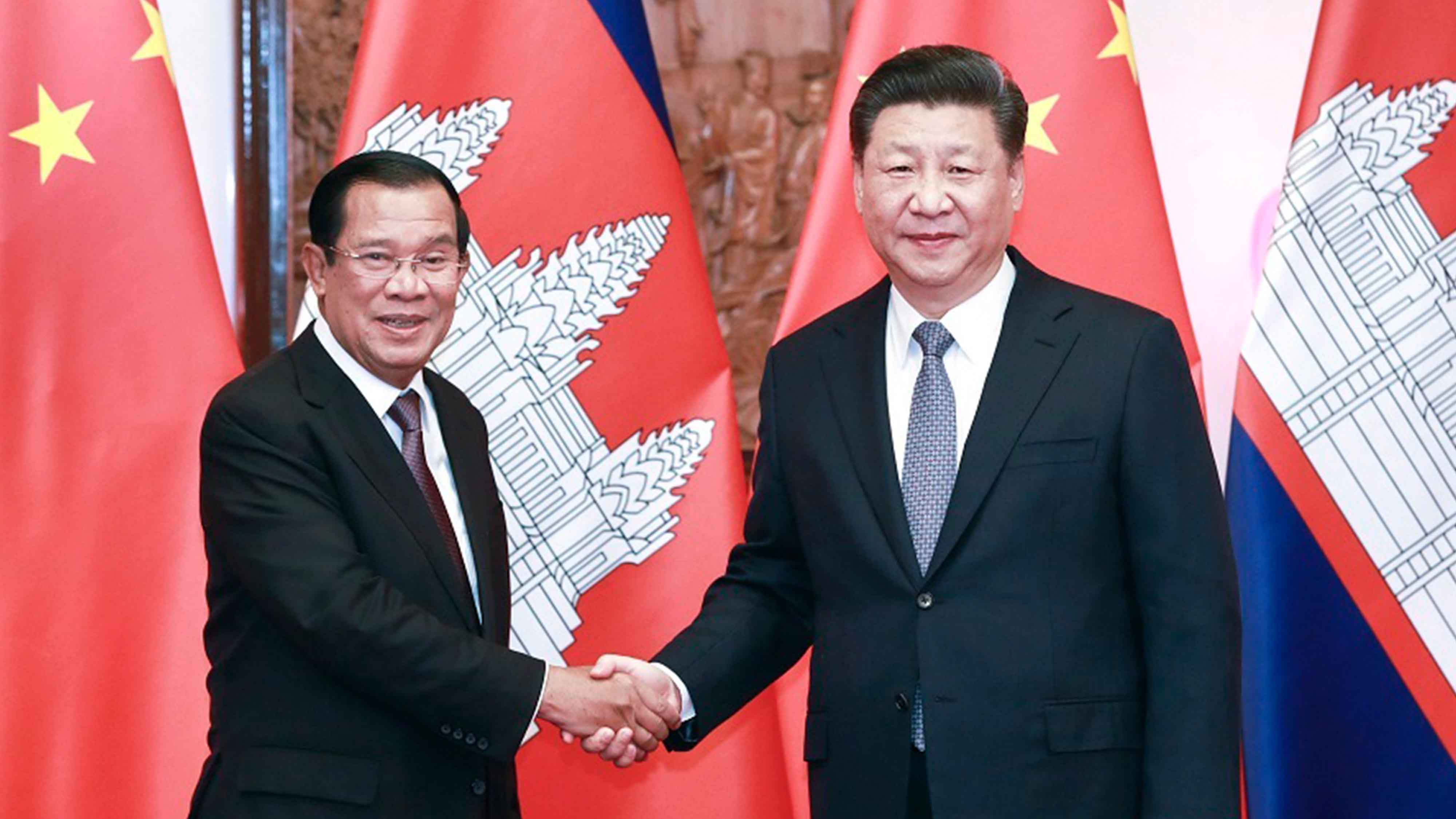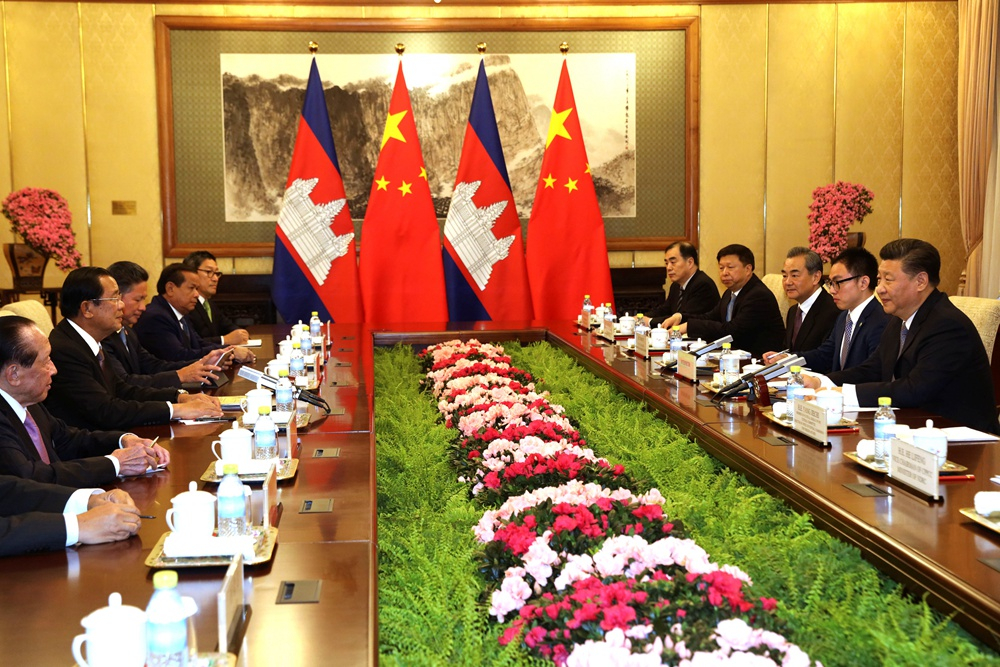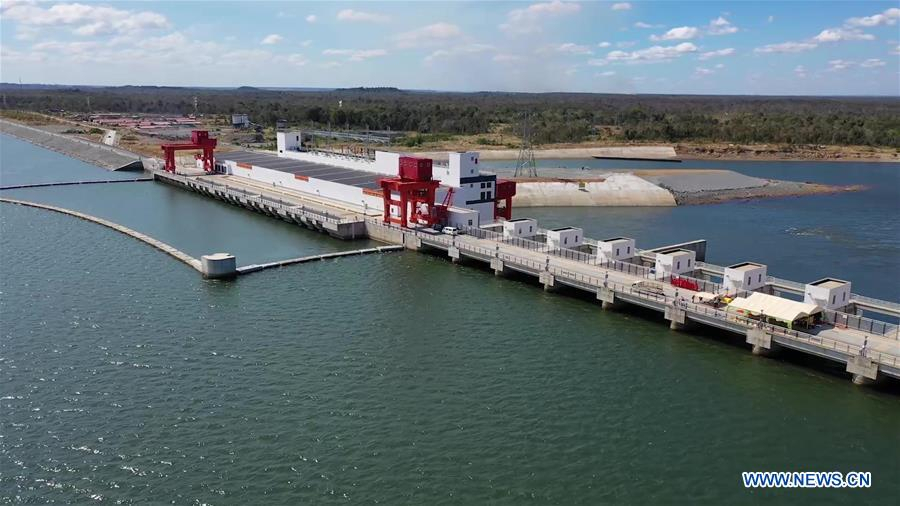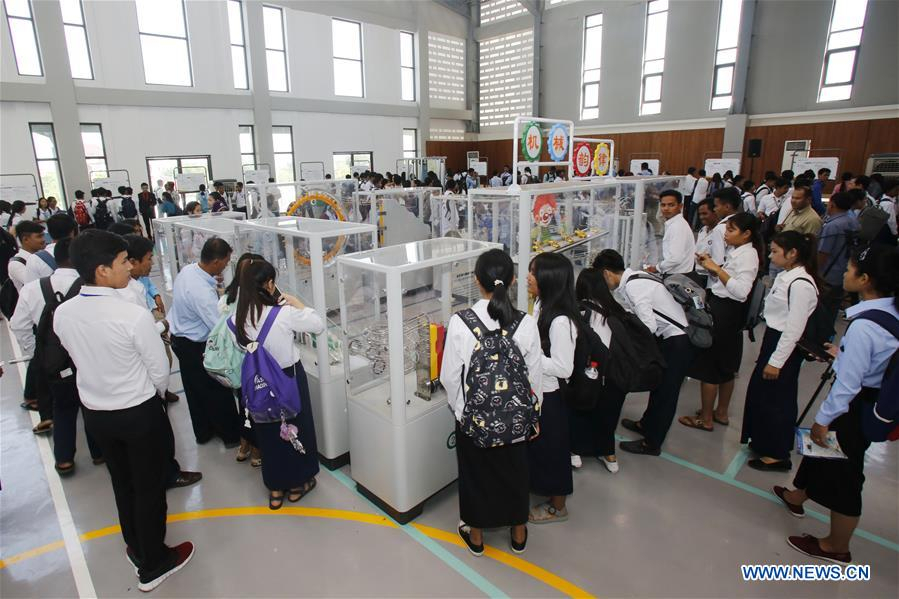
Asia Pacific
19:49, 21-Jan-2019
China, Cambodia to step up cooperation in trade, infrastructure
Updated
23:16, 21-Jan-2019
CGTN
00:33

Chinese President Xi Jinping called for accelerating the alignment of China's Belt and Road Initiative (BRI) and Cambodia's development strategy on Monday during his meeting with Cambodian Prime Minister Samdech Techo Hun Sen in Beijing.
The two countries should deepen cooperation in areas such as transportation, production capacity, energy and trade, and make joint efforts to improve people's welfare, President Xi said, underscoring "new development opportunities" in bilateral ties.
China and Cambodia celebrated the 60th anniversary of the establishment of diplomatic relations last year, he noted.

Chinese President Xi Jinping (1st R) meets with Cambodian Prime Minister Samdech Techo Hun Sen (2nd L) at Diaoyutai State Guesthouse in Beijing, January 21, 2019. /Reuters Photo
Chinese President Xi Jinping (1st R) meets with Cambodian Prime Minister Samdech Techo Hun Sen (2nd L) at Diaoyutai State Guesthouse in Beijing, January 21, 2019. /Reuters Photo
Hun Sen, who is on an official visit to China from Sunday to Wednesday, said Cambodia is willing to work together with China under the BRI and enhance cooperation in fields including the advancement of people's wellbeing, agriculture, trade, investment and infrastructure.
Proposed by Chinese President Xi Jinping in 2013, the BRI comprises the Silk Road Economic Belt and the 21st-Century Maritime Silk Road, and aims to build trade and infrastructure networks connecting Asia with Europe and Africa along and beyond the ancient Silk Road routes.
President Xi stressed that the two countries should strengthen communication and collaboration in the United Nations and under mechanisms such as the China-ASEAN (the Association of Southeast Asian Nations) partnership and Lancang-Mekong Cooperation (LMC).

The China-built Lower Sesan II hydroelectric power station in Stung Treng Province, Cambodia. /Xinhua Photo
The China-built Lower Sesan II hydroelectric power station in Stung Treng Province, Cambodia. /Xinhua Photo
The Chinese president also called for more exchanges between the two sides in culture, tourism and heritage protection and among their youths, adding that the cooperation in law enforcement and security should be enhanced as well.
Hun Sen agreed that Cambodia and China should enhance people-to-people exchange as well as law enforcement and security cooperation.
Cambodia is willing to strengthen communication and collaboration with China in international and regional affairs, he noted.
The Cambodian prime minister visited an exhibition to commemorate the 40th anniversary of China's reform and opening-up in Beijing earlier on Monday.
Born in 1952, Hun Sen became the Cambodian prime minister in 1998 and was reelected in 2003, 2008, 2013 and 2018.

Cambodian students visit a science and technology exhibition launched by a Chinese museum in Phnom Penh, Cambodia, December 13, 2018. /Xinhua Photo
Cambodian students visit a science and technology exhibition launched by a Chinese museum in Phnom Penh, Cambodia, December 13, 2018. /Xinhua Photo
Growing ties
According to reports by the Cambodian media, some 70 percent of roads and bridges in the country were funded by China.
Last week, Phnom Penh broke ground for the construction of its third ring road – the latest in a string of projects reflecting the close ties between Cambodia and China.
"Most of the investment capital for infrastructure development projects here (in Cambodia) is from the People's Republic of China," Cambodian Prime Minister Samdech Techo Hun Sen said at the groundbreaking ceremony.
Read more:
In November 2017, the Cambodian government said it puts the China-proposed BRI as a key development strategy.
In addition to BRI cooperation, China and Cambodia are both members of the LMC, a sub-regional cooperation mechanism jointly established by six countries that share the same river called "Lancang" in China and "Mekong" in the other five.
Bilateral trade volume between China and Cambodia reached 5.79 billion U.S. dollars in 2017, a rise of 21.7 percent year-on-year, according to the Chinese Ministry of Commerce.
The two countries aim to increase their annual trade volume to six billion U.S. dollars by 2020.
6km

SITEMAP
Copyright © 2018 CGTN. Beijing ICP prepared NO.16065310-3
Copyright © 2018 CGTN. Beijing ICP prepared NO.16065310-3